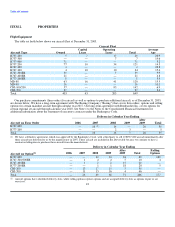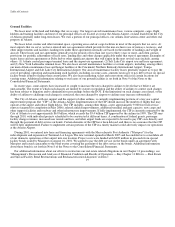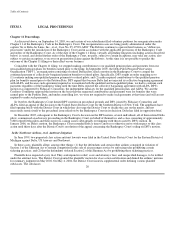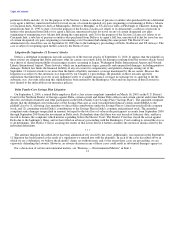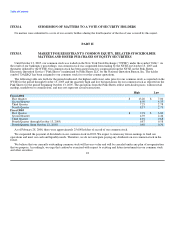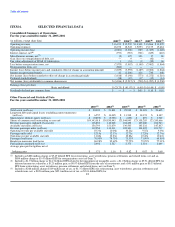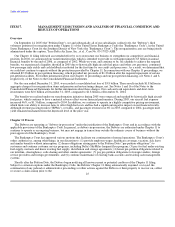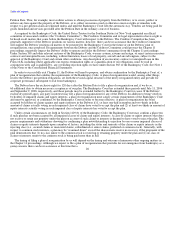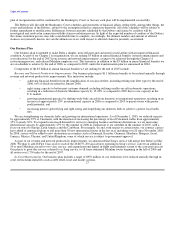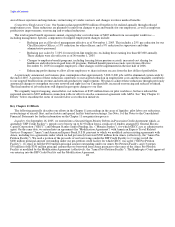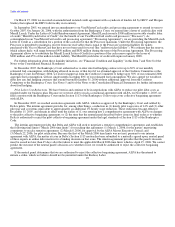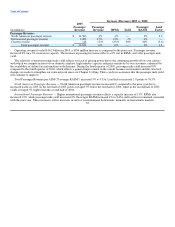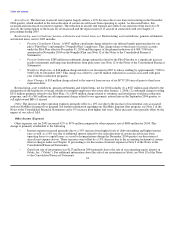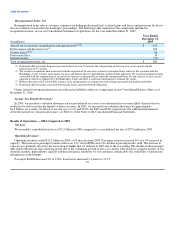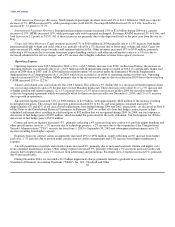Delta Airlines 2005 Annual Report Download - page 33
Download and view the complete annual report
Please find page 33 of the 2005 Delta Airlines annual report below. You can navigate through the pages in the report by either clicking on the pages listed below, or by using the keyword search tool below to find specific information within the annual report.
Table of Contents
aircraft lease rejections and negotiations, restructuring of vendor contracts and changes to retiree medical benefits.
Competitive Employment Costs. Our business plan targeted $930 million of benefits to be realized annually through reduced
employment costs. These reductions are planned to result from changes to pay and benefits for our employees, as well as employee
productivity improvements, outsourcing and overhead reductions.
The total targeted benefit represents annual, ongoing labor cost reductions of $605 million from our nonpilot workforce —
including management. Specific components of nonpilot employment changes include:
• Reducing pay at all levels of management effective as of November 1, 2005. This includes a 25% pay reduction for our
Chief Executive Officer; a 15% reduction for other officers; and a 9% reduction for supervisory and other
administrative personnel.
• Reducing pay scales by 7-10% for most front-line employees, excluding those earning less than $25,000 annually.
These changes were also effective as of November 1, 2005.
• Changes to employee benefit programs, including freezing future pension accruals, increased cost sharing for
healthcare and reductions in paid time off programs. Defined benefit pension accruals were frozen effective
December 31, 2005 for nonpilot employees; other changes will be implemented in the first half of 2006.
• Enhancing profit-sharing to allow all our employees to share in future success from the first dollar of profitability.
As previously announced, our business plan contemplates that approximately 7,000–9,000 jobs will be eliminated system-wide by
the end of 2007. A portion of these reductions contributes to our targeted reduction in employment costs and the remainder contributes
to our targeted benefits from revenue and network productivity improvements. We plan to achieve these reductions through previously
announced changes to strengthen our route network and right-size our Cincinnati hub, increased outsourcing and reduced overhead.
The final number of job reductions will depend in part upon changes to our fleet.
We originally targeted ongoing, annual labor cost reductions of $325 million from our pilot workforce, but have reduced the
requested amount to $305 million in connection with our effort to reach a consensual agreement with ALPA. See "Key Chapter 11
Efforts" below regarding the status of our pilot labor cost reduction initiatives.
Key Chapter 11 Efforts
The following generally describes our efforts in the Chapter 11 proceedings in the areas of liquidity, pilot labor cost reductions,
restructurings of aircraft fleet, and real estate and special facility bond restructurings. See Note 1 of the Notes to the Consolidated
Financial Statements for further information on the Chapter 11 reorganization process.
Liquidity. On September 16, 2005, we entered into a Secured Super-Priority Debtor-in-Possession Credit Agreement which, as
amended ("DIP Credit Facility"), permits us to borrow up to $1.9 billion from a syndicate of lenders arranged by General Electric
Capital Corporation ("GECC") and Morgan Stanley Senior Funding, Inc. ("Morgan Stanley"), for which GECC acts as administrative
agent. On the same date, we entered into an agreement (the "Modification Agreement") with American Express Travel Related
Services Company ("Amex") and American Express Bank, F.S.B. pursuant to which we modified certain existing agreements with
Amex, including two agreements under which we had previously borrowed $500 million from Amex (collectively, the "Amex Pre-
Petition Facility"). We used a portion of the proceeds of our borrowings under the DIP Credit Facility to (1) repay in full the
$480 million principal amount outstanding under our pre-petition credit facility for which GECC was agent ("GE Pre-Petition
Facility"); (2) repay in full the $500 million principal amount outstanding under our Amex Pre-Petition Facility; and (3) prepay
$50 million of the $350 million principal amount that we borrowed from Amex pursuant to the terms of the Amex Pre-Petition
Facility as modified by the Modification Agreement (collectively, the "Amex Post-Petition Facility"). The Bankruptcy Court approved
our entering into the DIP Credit Facility and the Modification Agreement.
28


